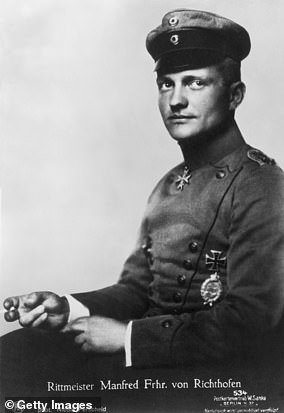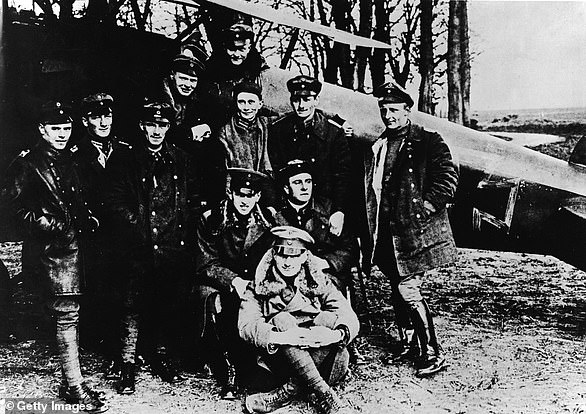The Red Baron flies again: Retired GP sells replica WW1 triplane he built in tribute to air ace because he is too scared to fly it himself
A retired German GP has sold an incredible replica of a First World War triplane which he made as a tribute to his hero, the Red Baron, after admitting he was too scared to fly it.
Dr. Peter Brueggemann, 59, who lives in Norfolk, spent eight years and £70,000 building the Dreidecker Dr from scratch. 1 fighter.
He fulfilled his childhood dream by emulating the German fighter pilot Manfred von Richtofen by flying it over the East Anglian countryside.
But last year he decided to give up his pride and joy because he found it very difficult to fly due to his limited experience.
After a year of searching for a suitable buyer, he sold the Fokker for £60,000 to British display pilot Richard Vary, who wanted to make display flights with it.
Dr. Peter Brueggemann, 59, who lives in Norfolk, has sold his First World War replica plane he made in honor of his hero the Red Baron – after admitting he is too scared to fly it
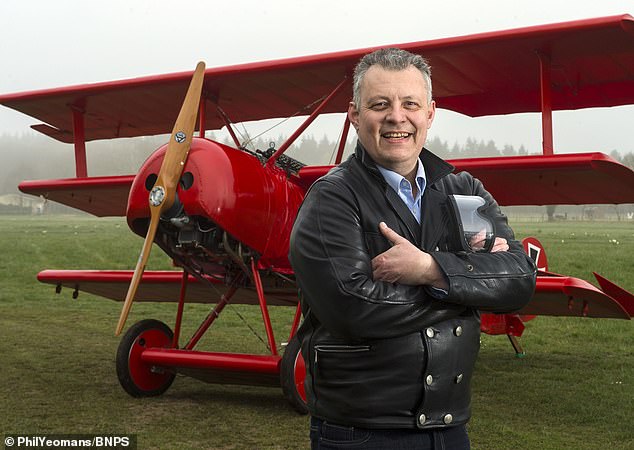
Brueggemann fulfilled his childhood dream of emulating German fighter pilot Manfred von Richtofen by flying it over the East Anglian countryside.
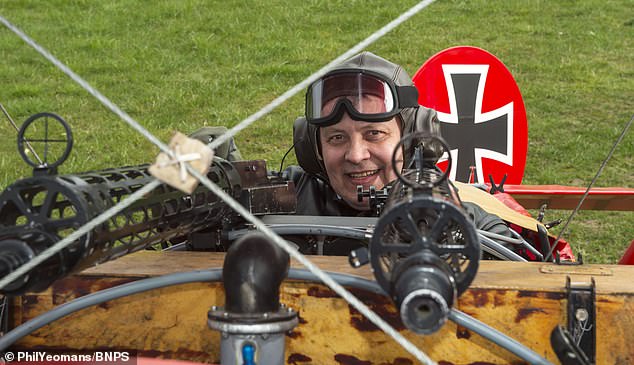
He sold the plane to pilot Richard Vary for £60,000 after a year of searching for a suitable buyer
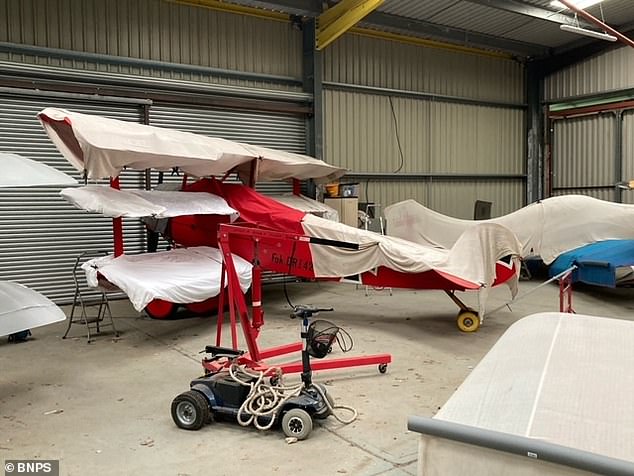
The model, which he completed in 2018, is an almost exact replica of the original aircraft and he used the same materials as 100 years ago
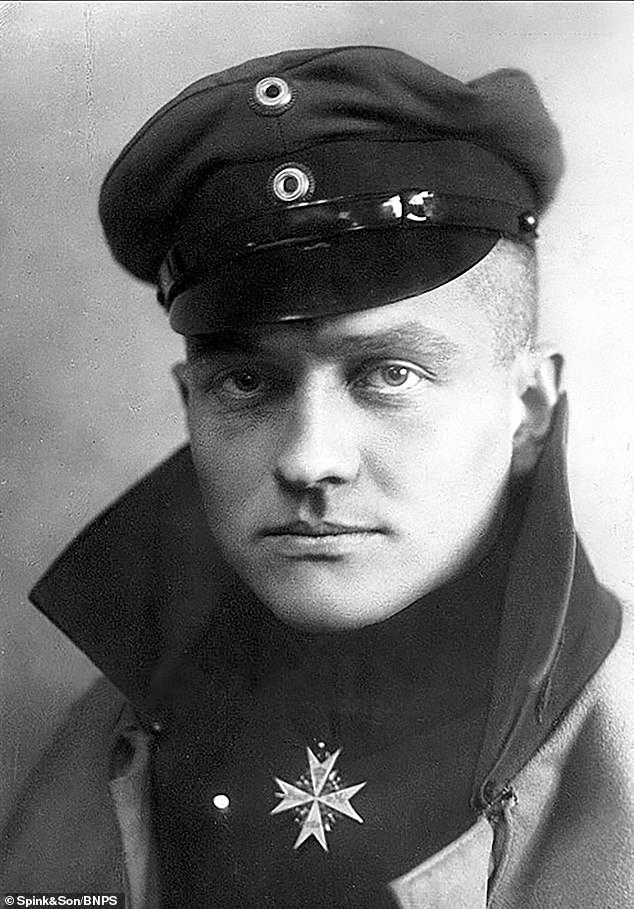
The Red Baron, who claimed 80 victories, terrified British pilots in the First World War
The father-of-two, who was a GP at Holt Medical Practice, said he was sad to say goodbye to the triplane as he had invested so much time and money in it.
But he was “proud” of what he had achieved and happy that the plane is going to a seasoned pilot who will take good care of it.
Peter said: 'I decided to sell the plane because although it is fantastic to fly, it is difficult to land.
'I had a number of difficult landings in the summer of 2022 and I no longer enjoyed flying.
'All three-deckers of this type are a challenge to land.
“Once you get 5 to 8 feet above the runway, you can't see the runway anymore, so it's hard to judge.
'An experienced pilot with thousands of flying hours could master the landing, but I only flew 25 hours.
'I was looking for a buyer for a year, then Richard Vary got in touch and asked if it was still for sale.
'We have closed the deal and I am happy that it will go to someone who will appreciate it and can make demonstration flights in it.
'He's currently looking for a hangar to put it in, so it's still in mine at the moment.
'It's sad to say goodbye to it, because I invested so much time and money in the project.
“But I'm proud that, even though I'm not a professional air mechanic, I built it from scratch and flew it.
“I got to experience a little of what it would have been like for the Red Baron more than 100 years ago, and it has only given me more respect for him.”
Since all of the original Dreideckers had been destroyed or lost, Dr. Brueggemann technical drawings, made in 1976 by American aviation enthusiast Ron Sands, as a blueprint to build his own version.
His model, completed in 2018, is an almost exact replica of the original aircraft and he used the same materials as 100 years ago.
He used the same metal to construct the fuselage and wood imported from Finland to build the three wings.
For safety reasons he installed a modern engine.
He sourced 'Richthofen red' fabric for the plane's skin from Germany and painted four large black crosses – the insignia of the German Air Force – on the wings and tail.
Dr. Brueggemann equipped the Dreidecker with two fake Spandau 7.92mm machine guns that make a huge racket and fire flames from a butane tank at his feet.
The Dreidecker is 18ft 11in long, has a wingspan of 23ft 7in and is 9ft 8in high. It has a maximum speed of 115 mph.
Dr. Brueggemann, who has lived in England for 26 years and is married to his wife Sue, has a pilot's license and also flies a Tiger Moth from the 1930s.
He acquired the title Baron from the independent territory of Zeeland off the English coast, so he is Baron von Brueggemann in tribute to his idol.
The Red Baron, who claimed 80 victories, terrified British pilots in the First World War.
He insisted that his plane was the only one in red because he wanted the enemy to know he was coming.
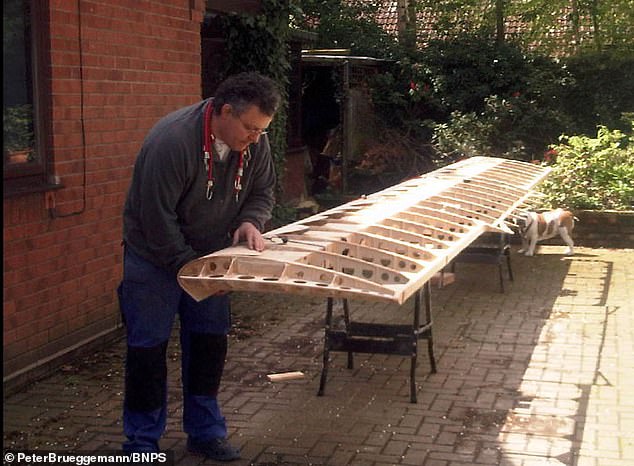
Dr. Brueggemann works on the wing spars outside his house, while his dog watches in the background
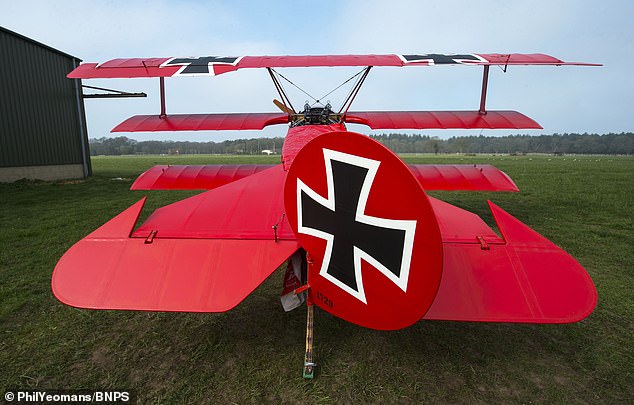
The Dreidecker is 18ft 11in long, has a wingspan of 23ft 7in and is 9ft 8in high. It has a maximum speed of 185 km/h and is equipped with two 7.92mm mock Spandau machine guns
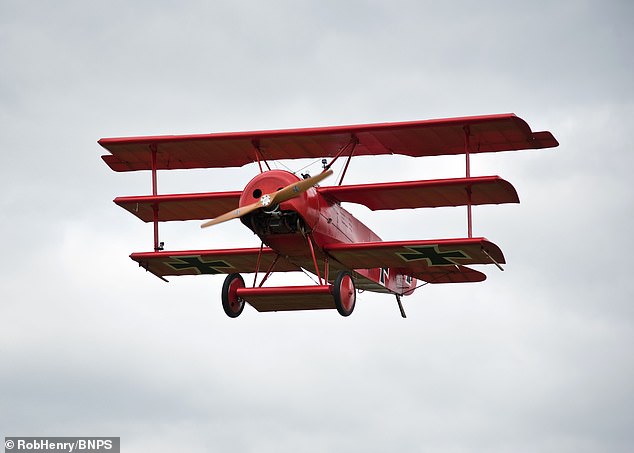
The skin of the aircraft is made of 'Richthofen red' fabric from Germany
Dr. Brueggemann said: 'This aircraft is virtually identical to the one from over 100 years ago – the only difference is the engine.
'The machine guns really sound like machine guns. I did it to make the plane more realistic, so people can see the plane and hear the sounds, so they know what it was really like in World War I.
'This type of aircraft is so unique – in appearance and red color – and the history behind it is quite fascinating.
'It was Richthofen's idea to paint the plane red because he wanted to be seen by the enemy quite quickly and to be afraid of him because they knew he was the only pilot with a red plane.
“He actually came from the cavalry, but he had a killer instinct and always wanted to be more efficient.”

